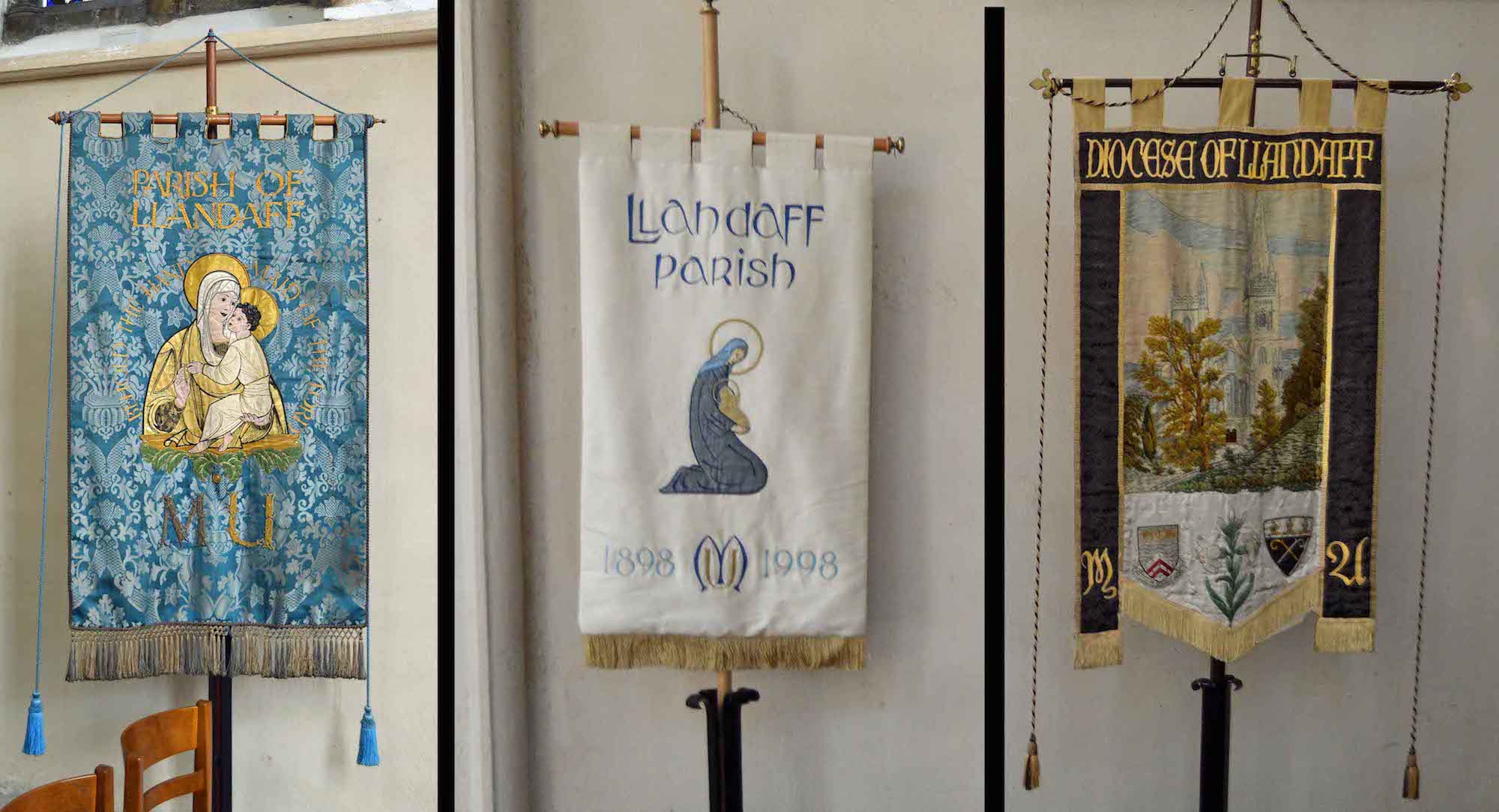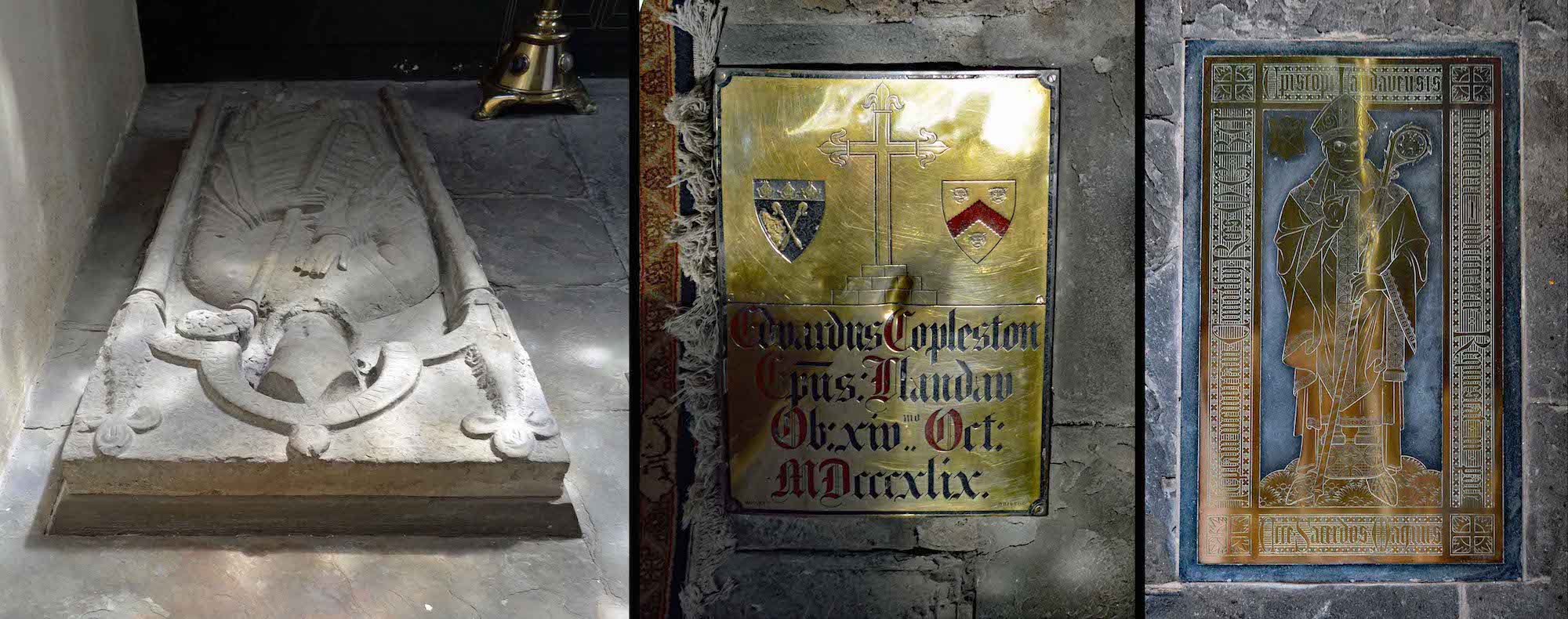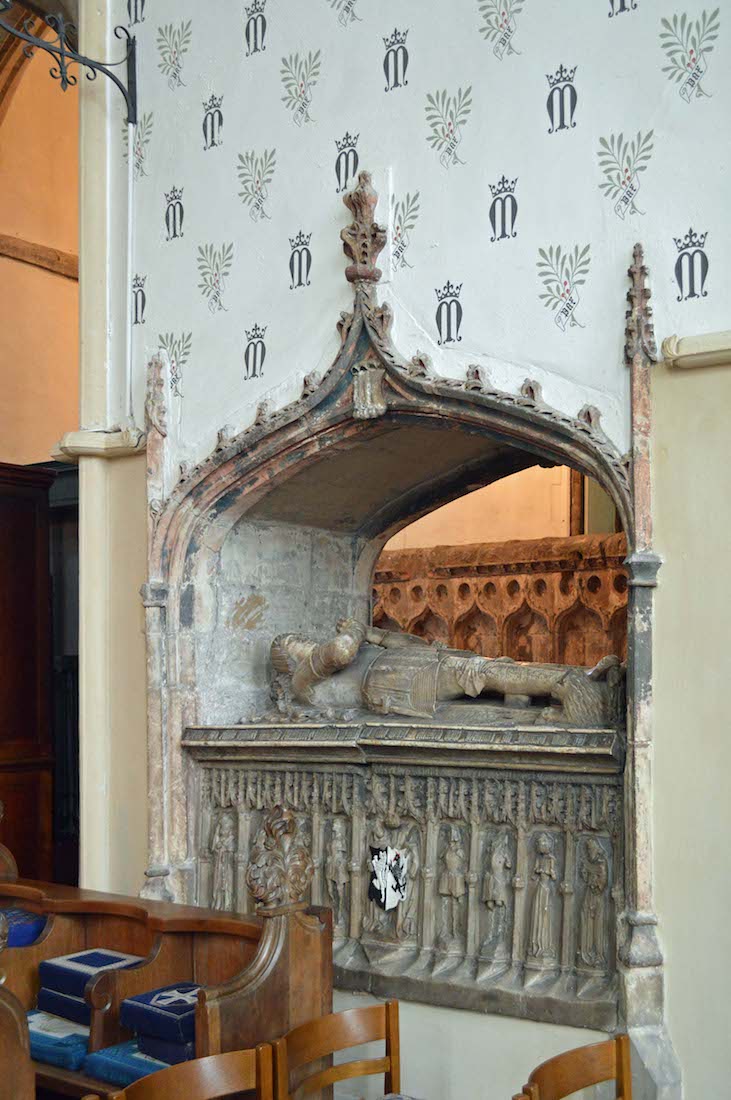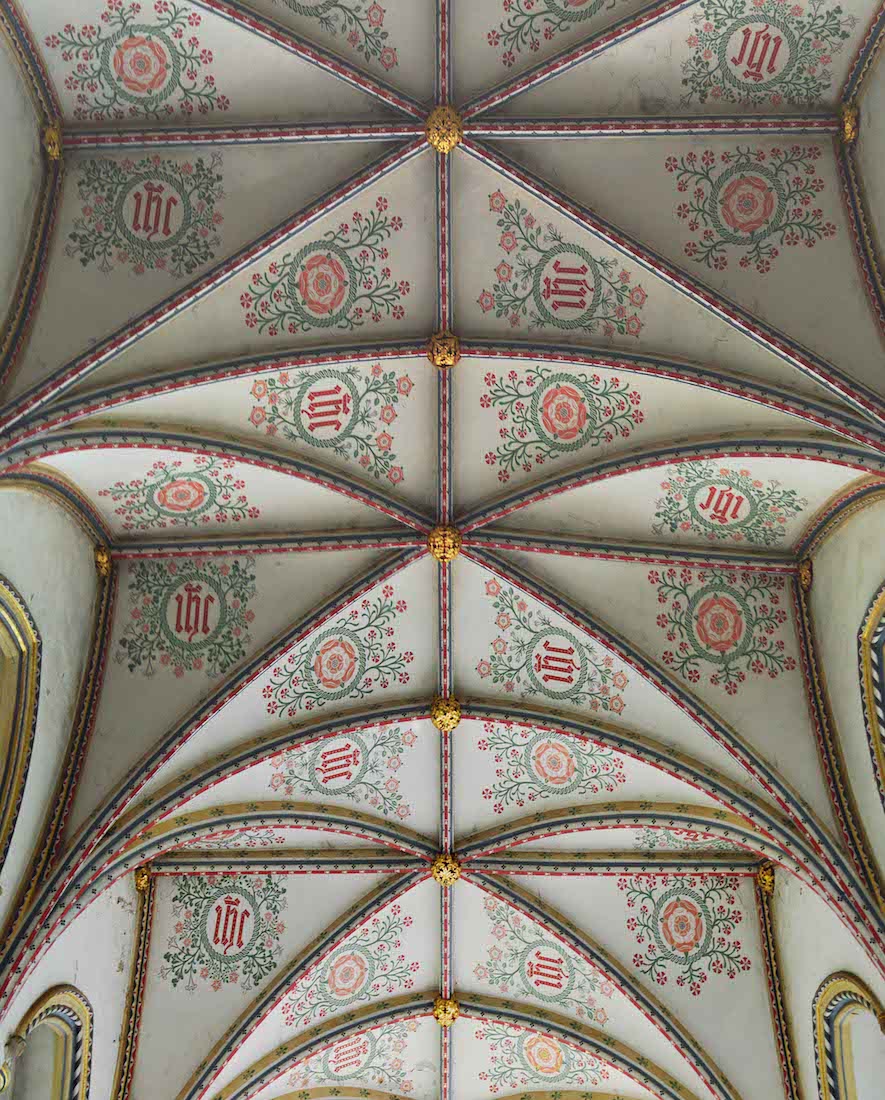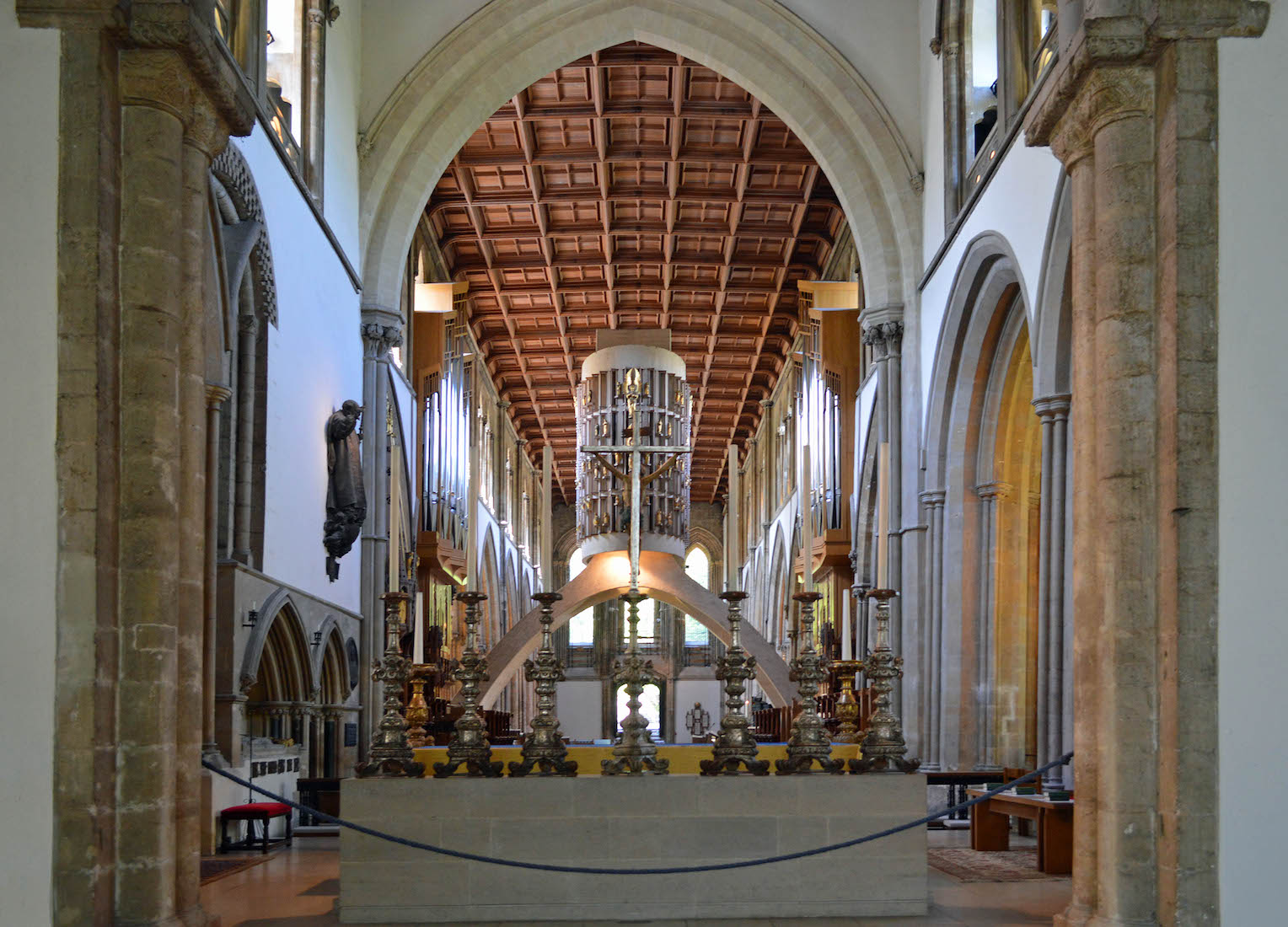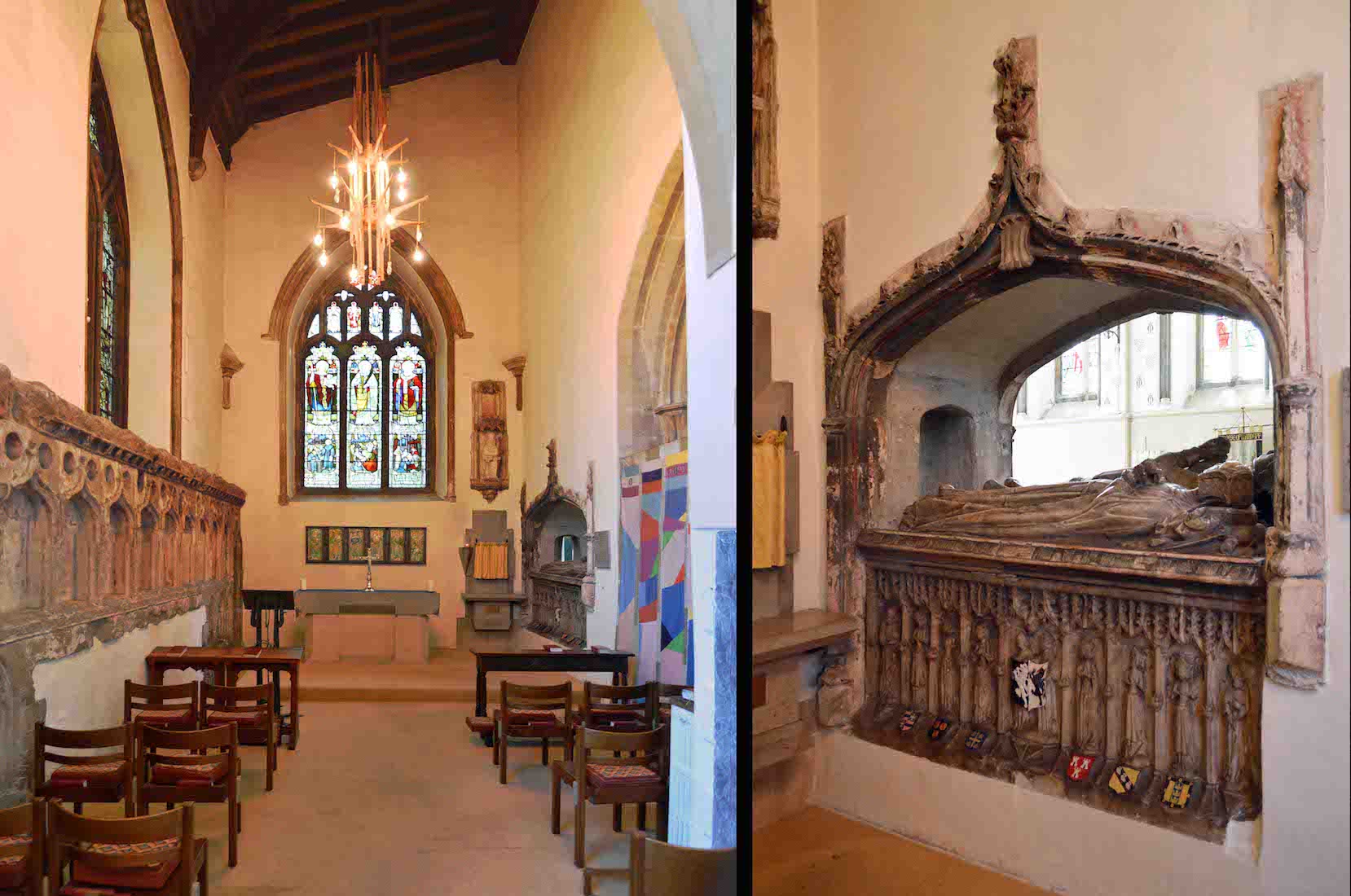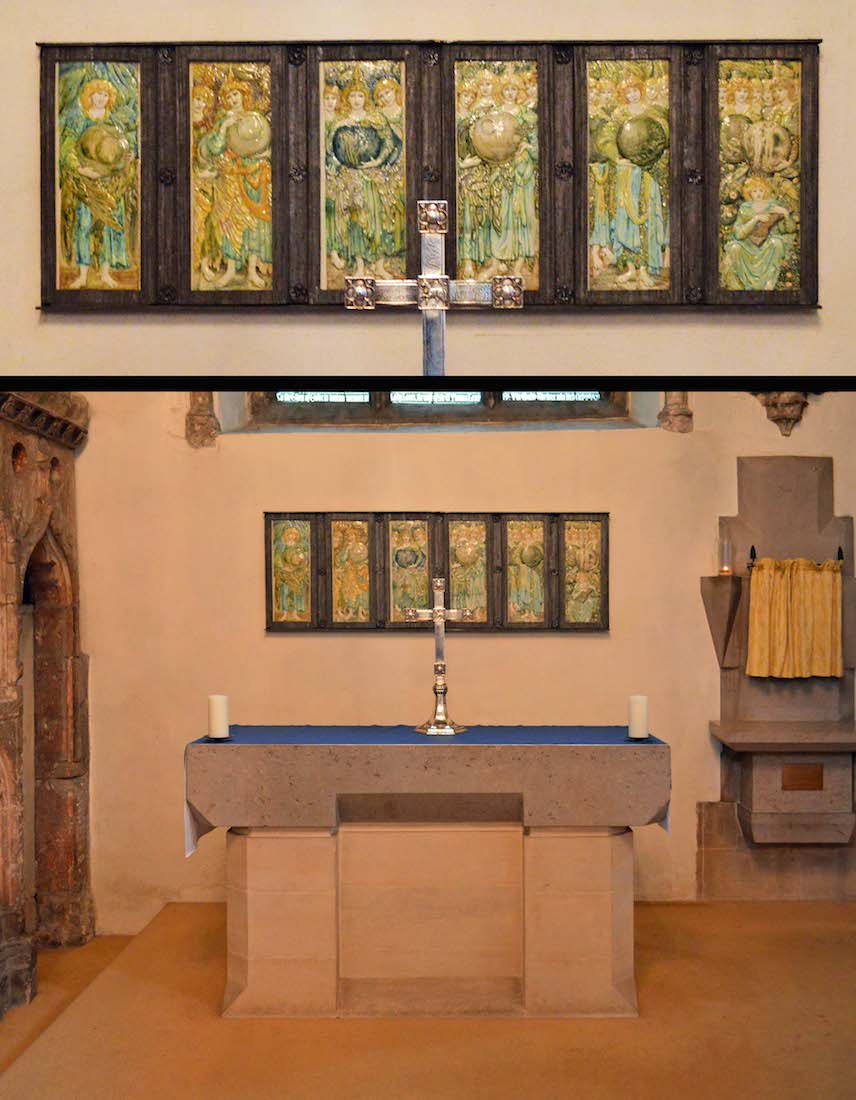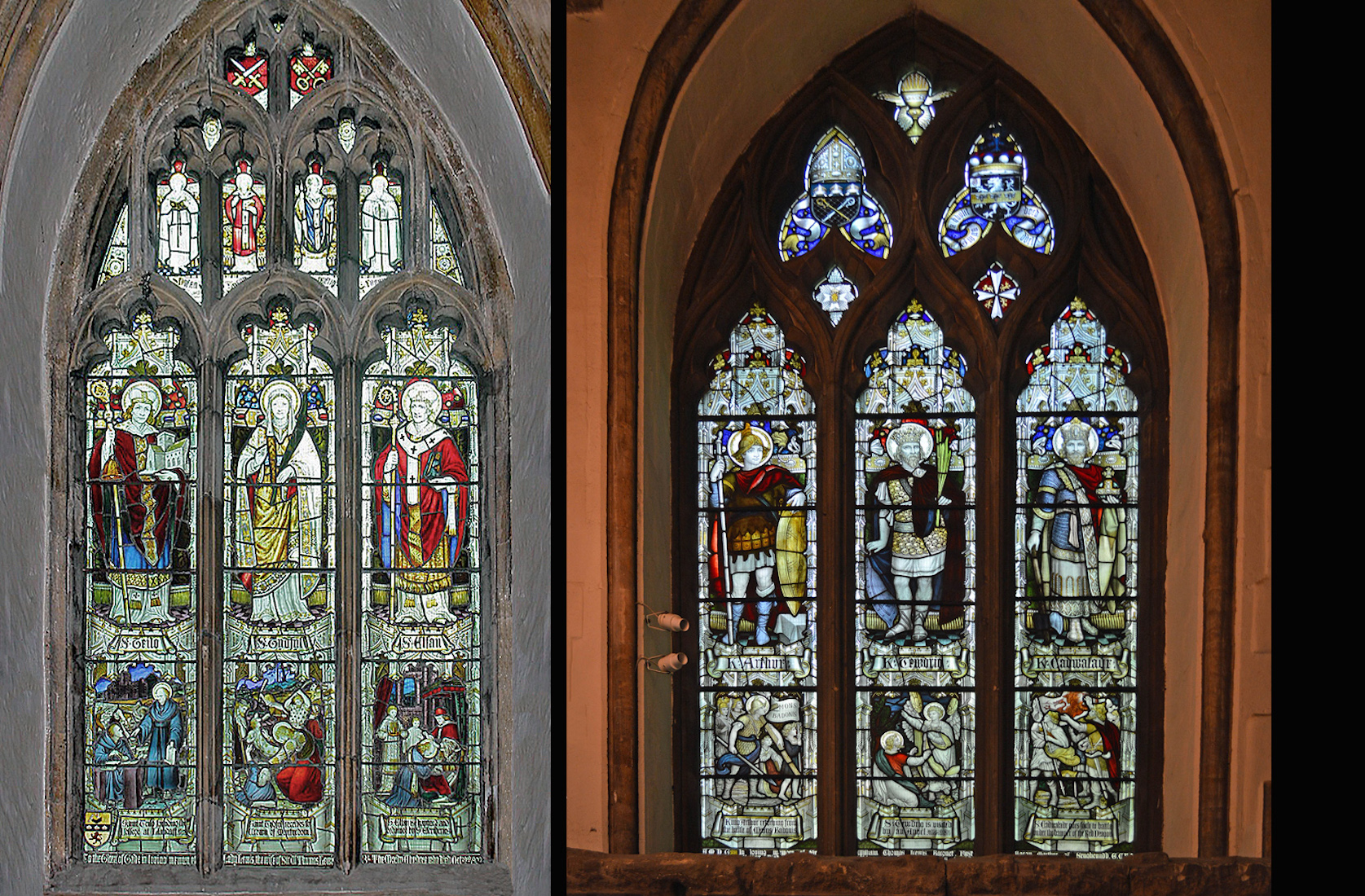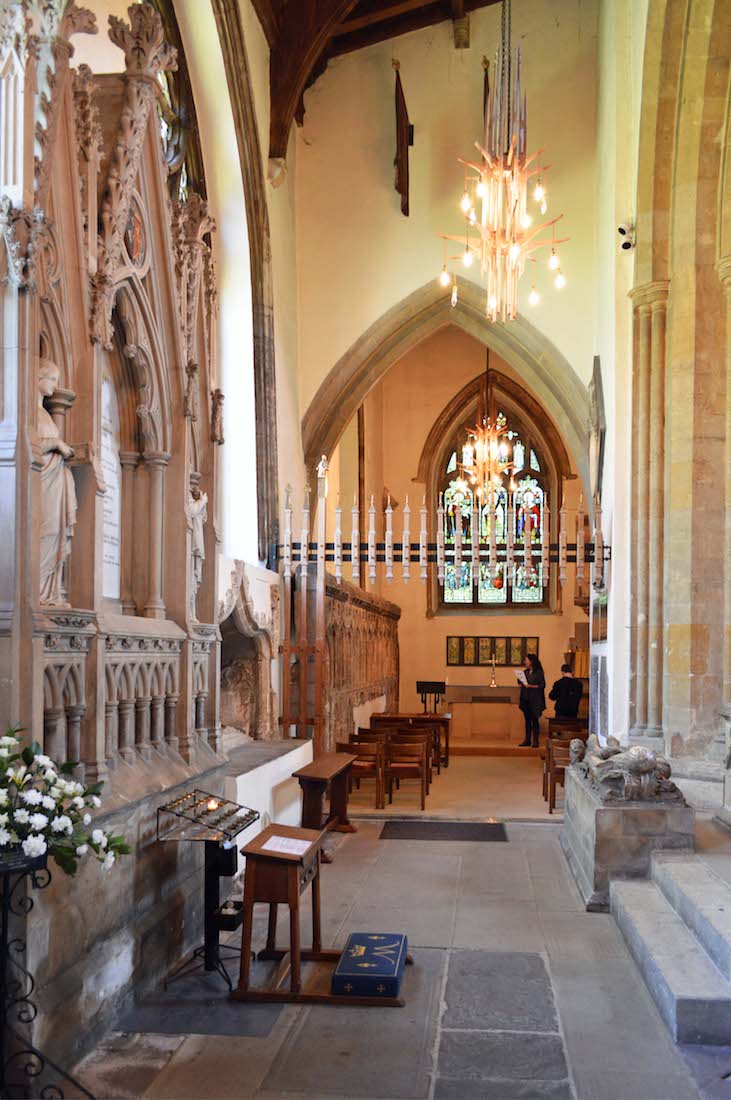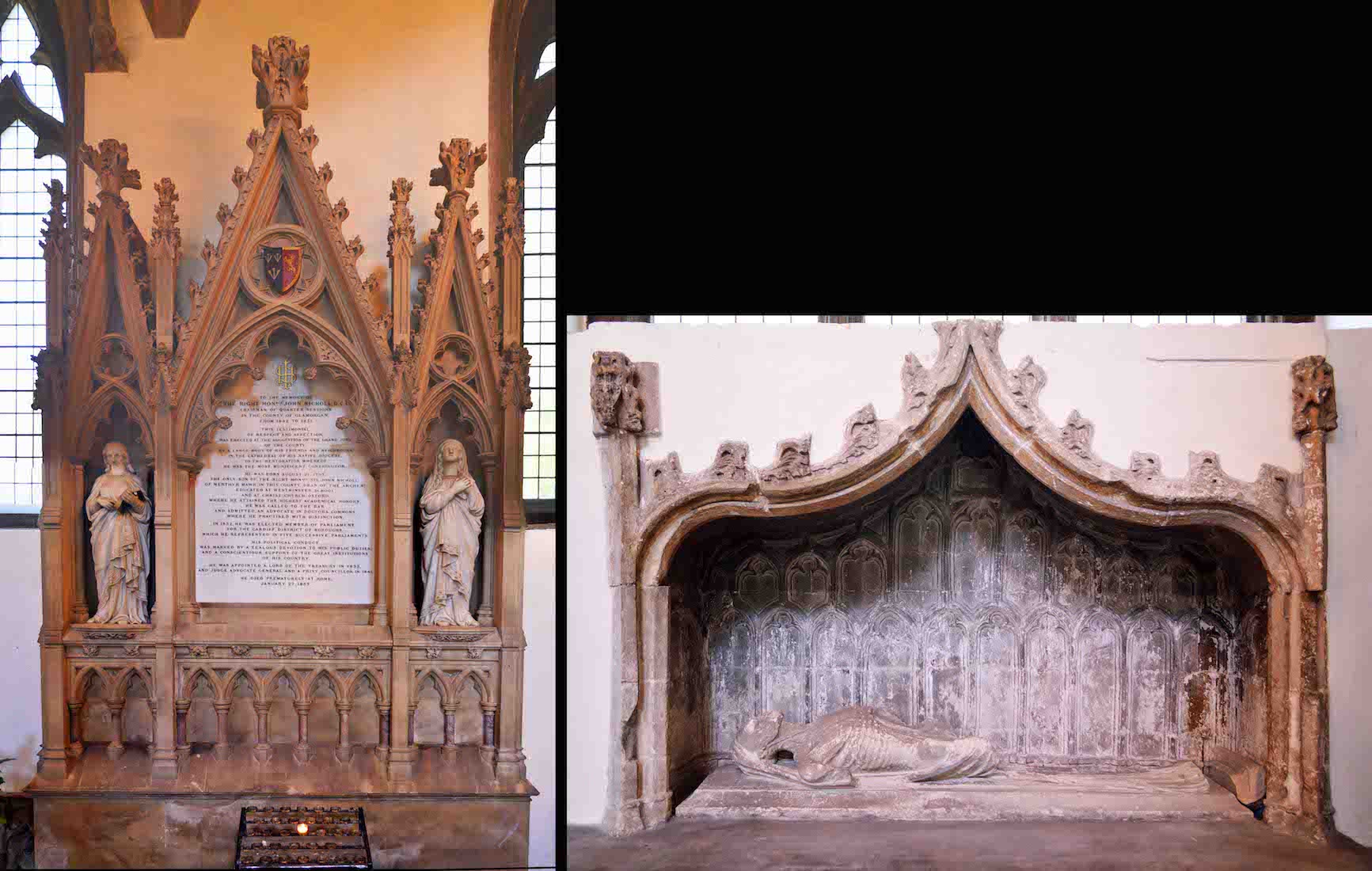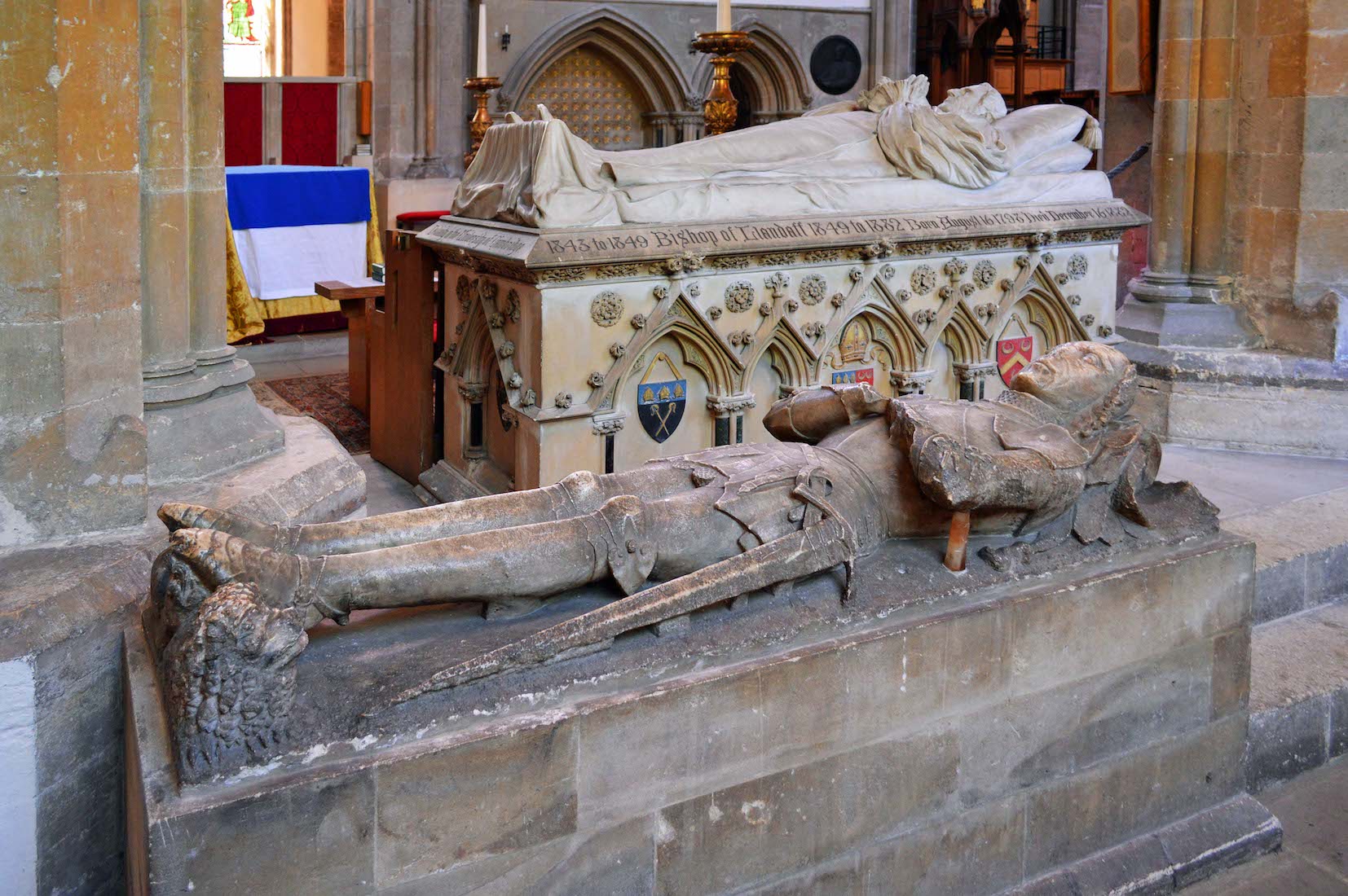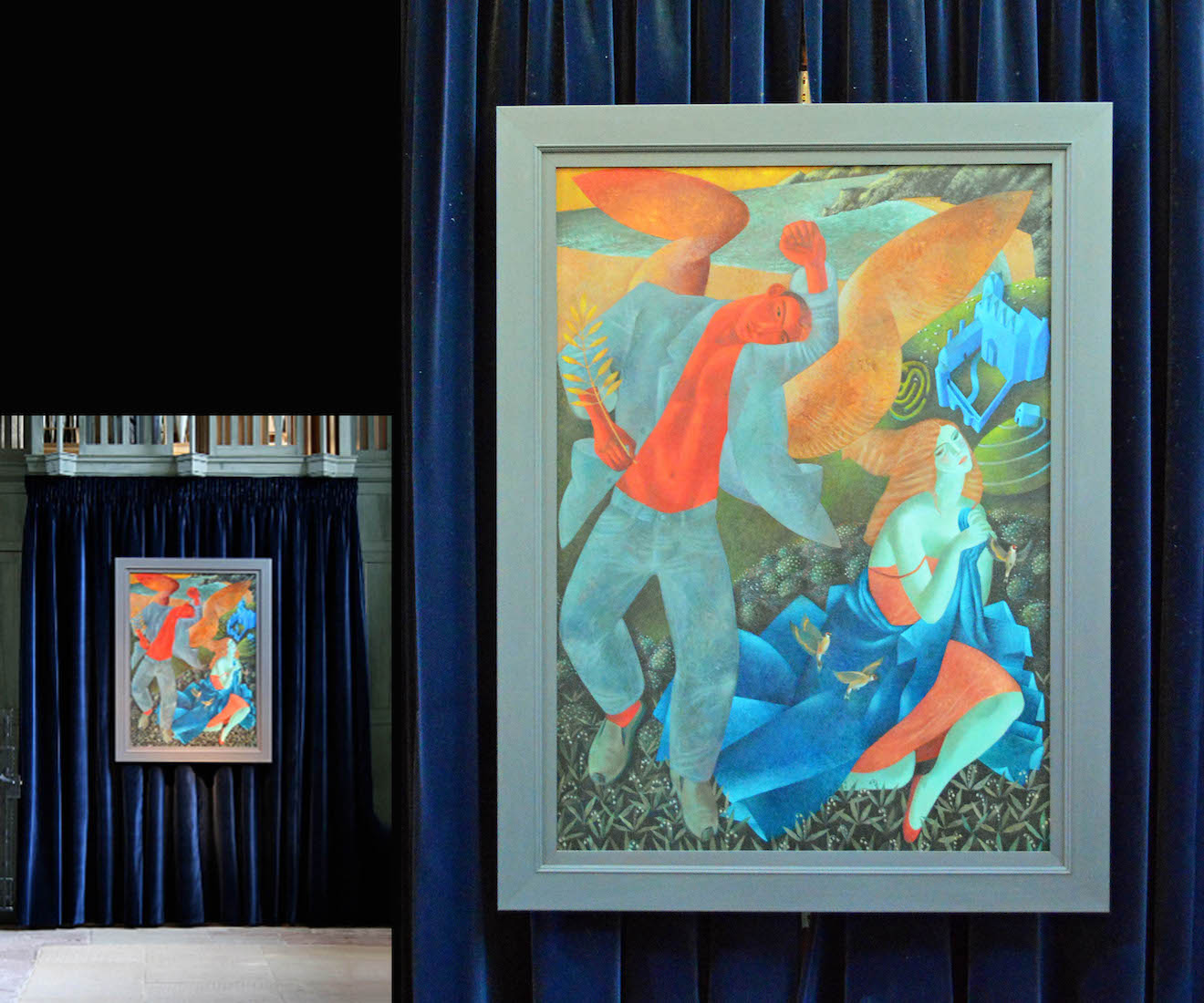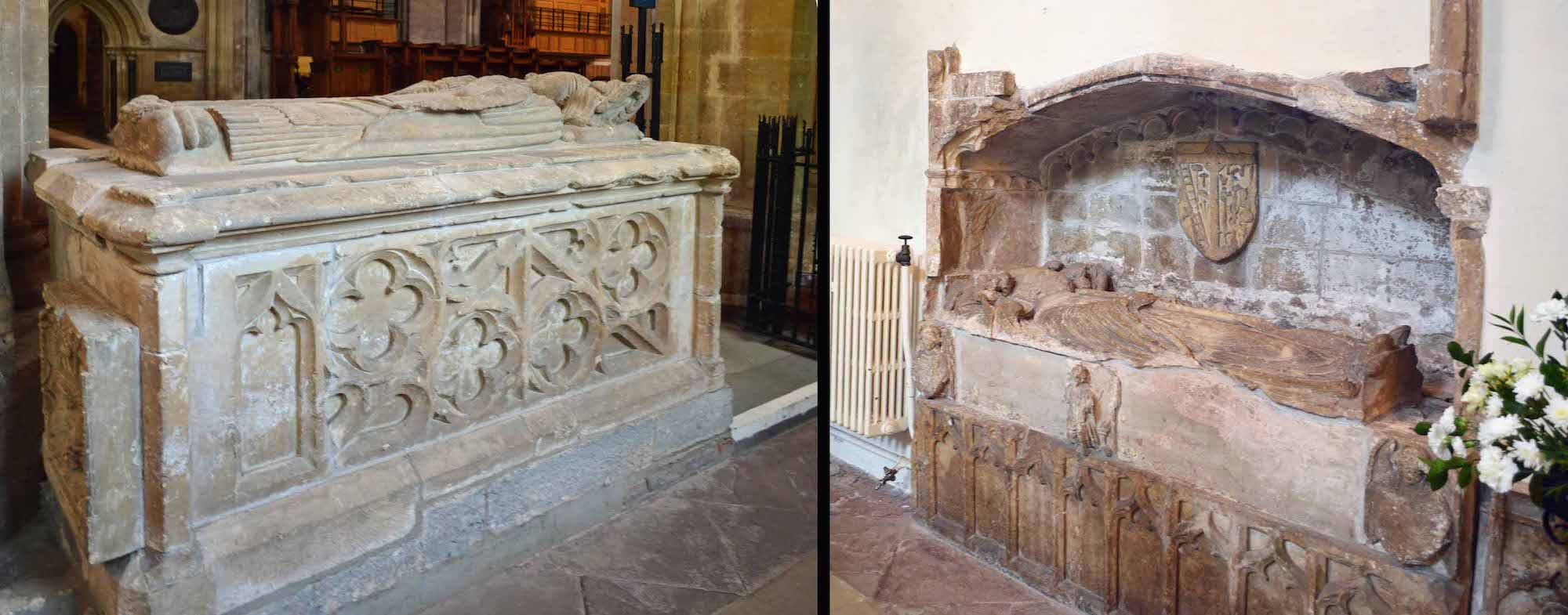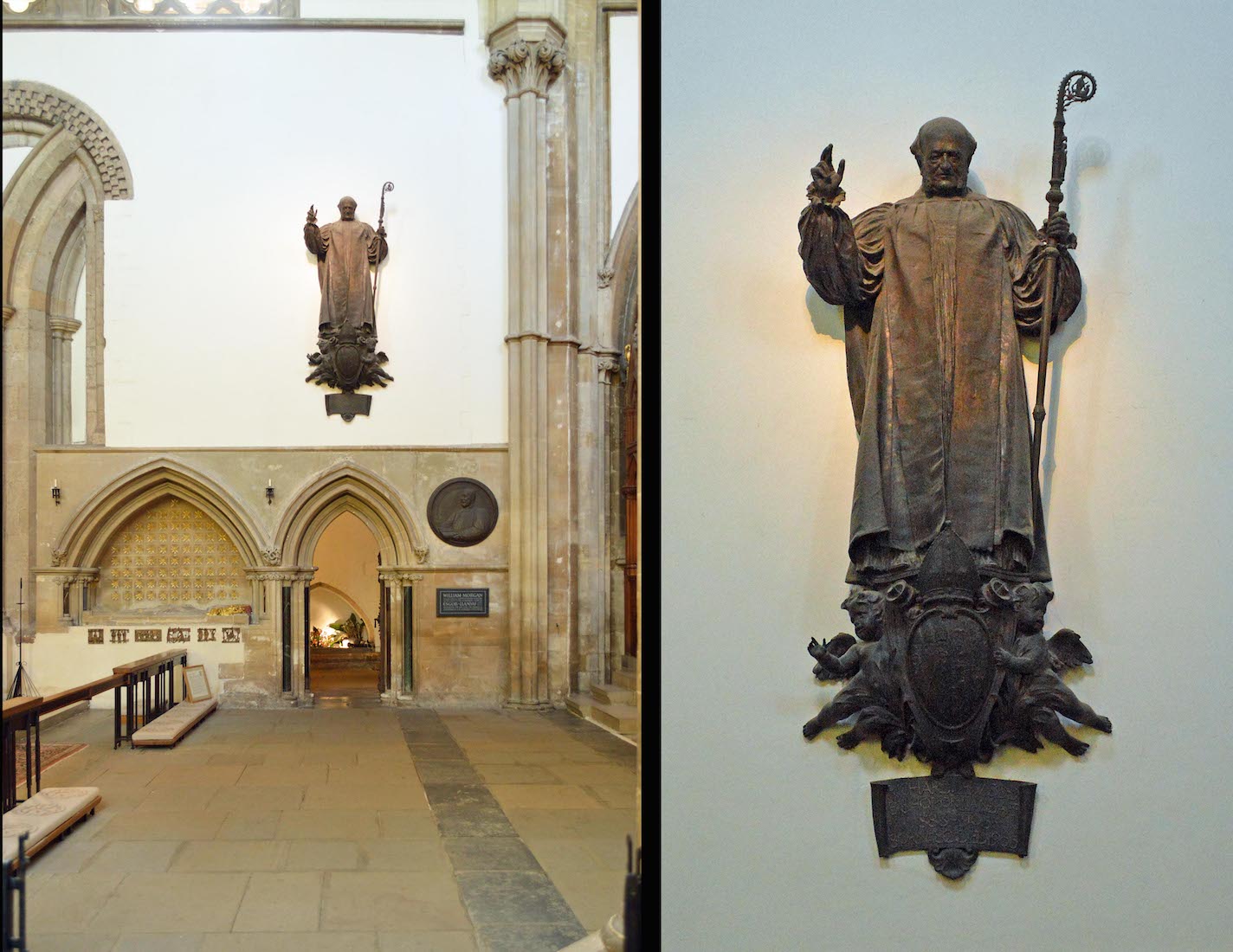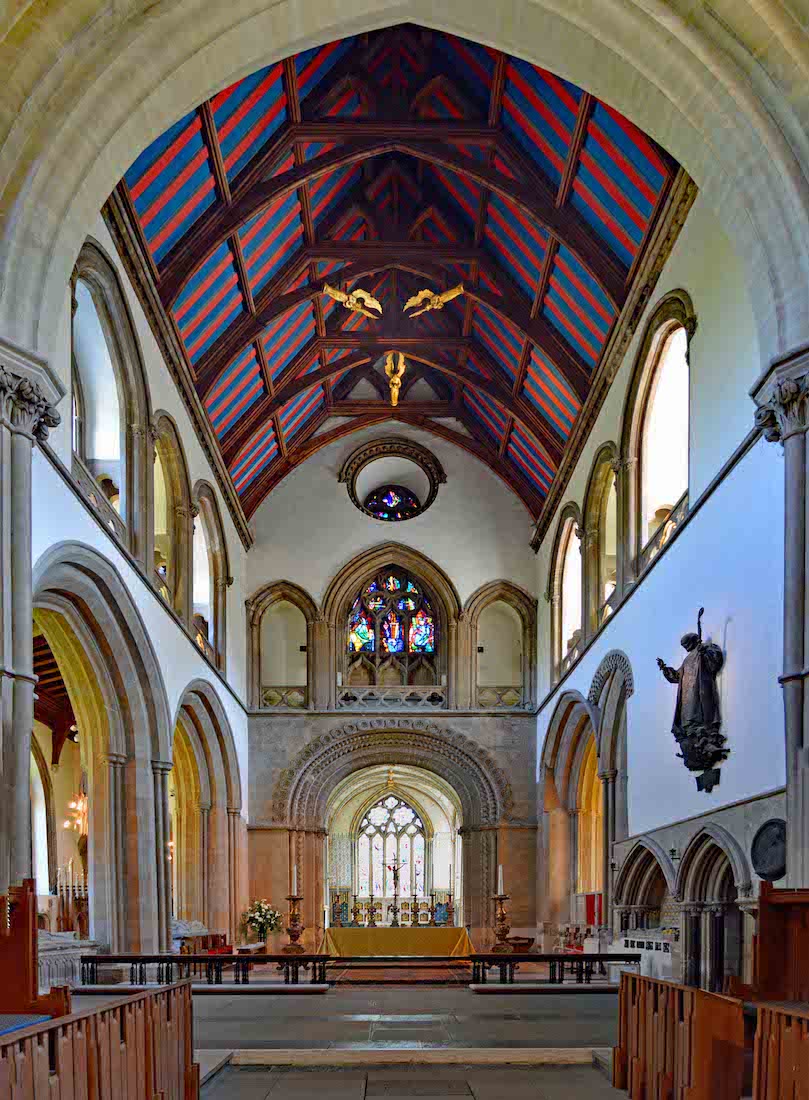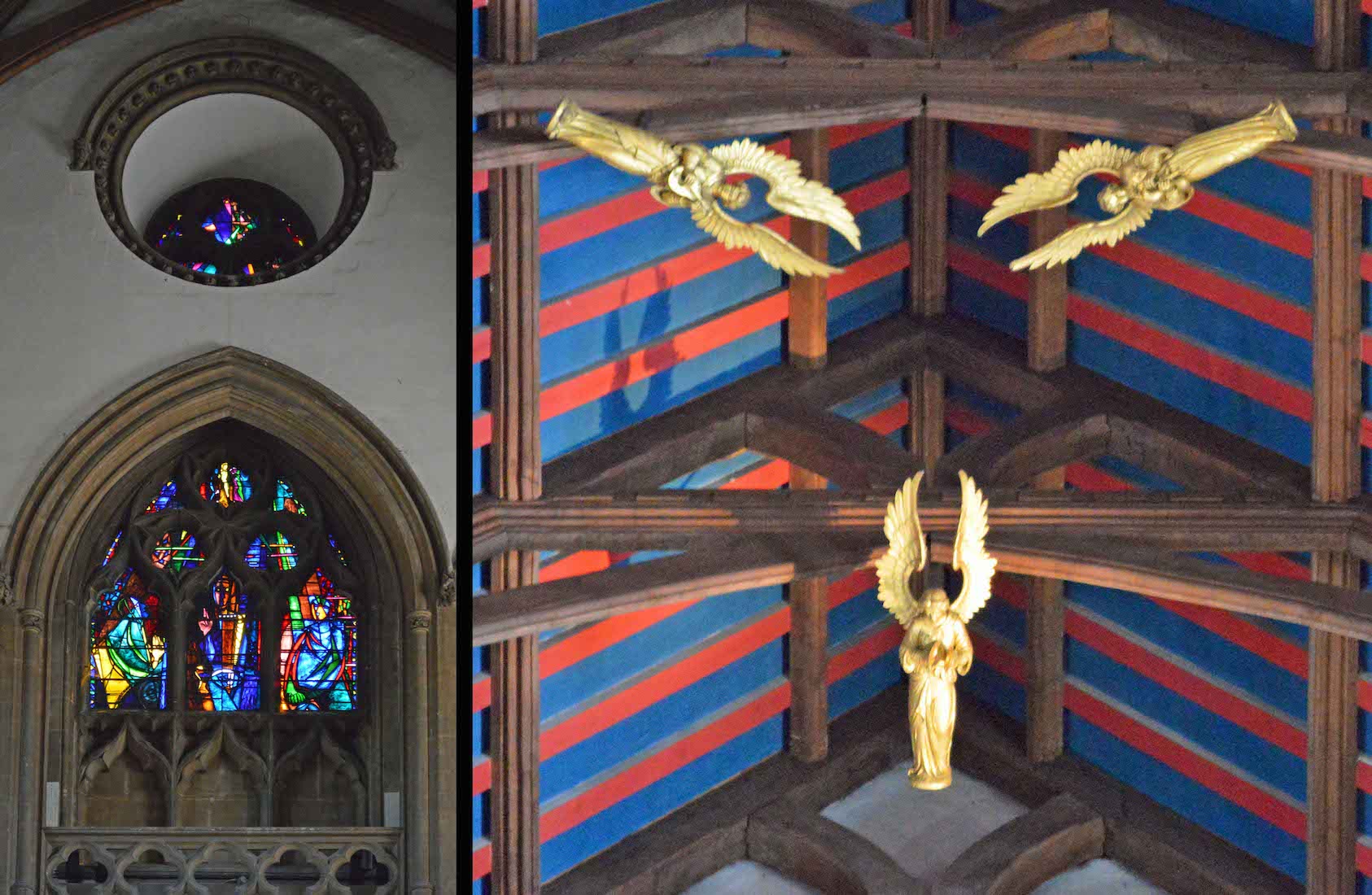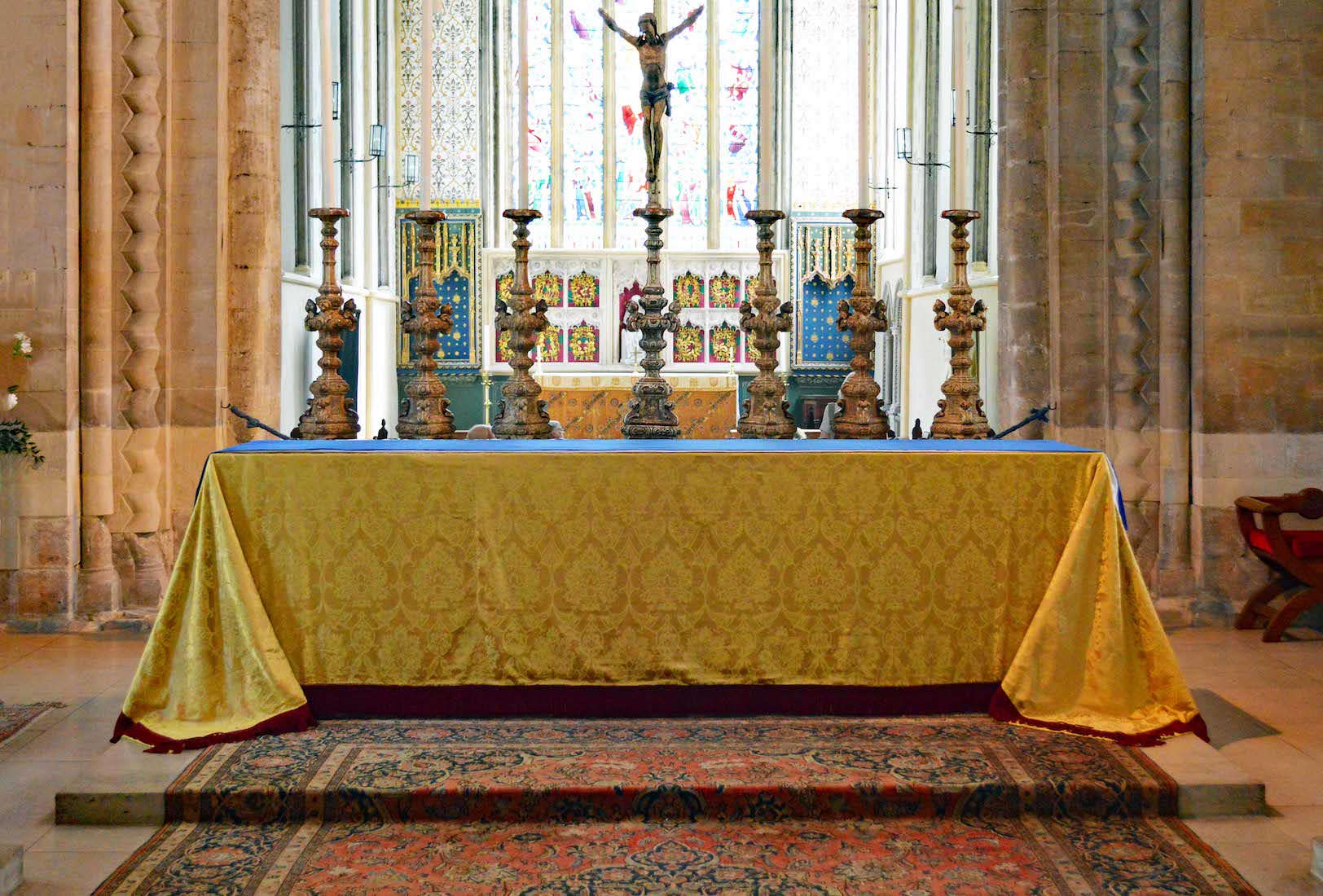61. LADY CHAPEL ALTAR AND REREDOS
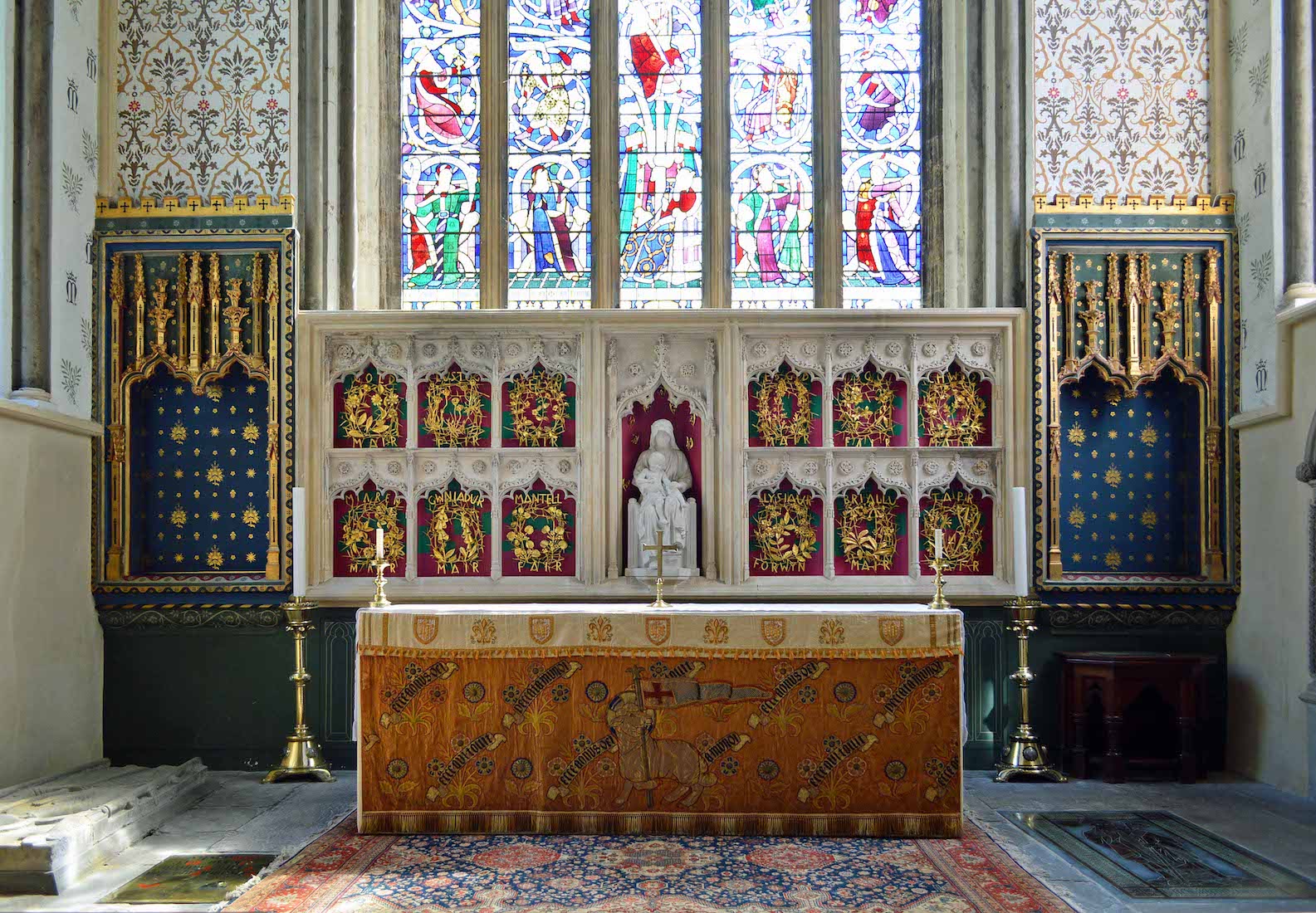
The reredos is the 15th century carved screen behind the altar. In the centre is a statue of the Virgin and Child by A G Walker, placed there in 1934. The gilded panels in the reredos were designed by Frank Roper in 1954, with each showing a wild flower named in Welsh in honour of Mary. PLAN
62. LADY CHAPEL WINDOW

The modern coloured glass of the 12th century East window represents the ‘Jesse Tree’, depicting the ancesters of Jesus listed by St Matthew at the beginning of his gospel.
63. CHAPEL SIDE WINDOWS
These four side windows of the chapel form a lovely set. There are are two on the North side and two on the South side, and they are shown here in order, from left to right. They illustrate important early events in the life of St Mary: Mary and the Archangel Gabriel (The Annunciation); Mary and her cousin St Elizabeth (The Visitation); Mary and Simeon in the Temple (The Presentation); and Mary and St Joseph (The Nativity). Of course, chronologically, the last two need to be reversed.
64. MOTHERS’ UNION BANNERS
There are three banners here bearing the logo of the Mothers’ Union – two for Llandaff Parish and one for Llandaff Diocese. This is a natural place for these banners to be displayed, with St Mary being taken as an example of motherhood to be followed.
65. CHAPEL TOMB AND BRASSES
A tombstone and two brasses are set in the floor close to the altar in the Lady Chapel. The tomb (and brass) on the left is of William de Braose, Bishop of Llandaff from 1266 to 1287. As the ‘founder’ of the Lady Chapel, he is buried on the traditional North side of the altar. On the right is the brass of Timothy Rees, Bishop of Llandaff from 1931 to 1939. He was at the forefront of the work in South Wales helping the unemployed during the Great Depression of the 1930s.
66. LADY CHAPEL WALL EFFIGY
The stencilled walls and ceiling of the Lady Chapel, designed by Geoffrey Webb, date from 1908, and were restored in 1988. We have already observed from the other side the effigy of Lady Audley who died in 1409.
67. LADY CHAPEL VAULTING
The spectacular painted vaulting of the chapel is decorated with red roses and the monogram IHC. The Virgin Mary is often referred to as the ‘rose without thorns’. ‘IHC’ is a monogam for Jesus Christ.
68. CATHEDRAL VIEW
Leaving the Lady Chapel, we can see back across the high altar and right down the length of the Cathedral. It is hard not to be captivated by this view! To reach the Dyfrig Chapel in the Northeast corner of the Cathedral we have to backtrack to the doorway underneath the Richard Lewis statue (on the left wall), and cross to the North side between the choir and sanctuary.
69. DYFRIG CHAPEL
At the end of the chapel stands an altar with six rectangular plates above. There are two stained glass windows. To the right of the altar is an aumbry below a statue of St Dyfrig, and then an effigy. On the wall to the left is the old medieval stone reredos that used to stand behind the high altar. It retains some of its original colouring. At right is the tomb and effigy of Sir Christopher and Lady Elizabeth Mathew: we have already noted this from the Lady Chapel. The hole in the end wall of the tomb is called the squint: it allowed worshippers in the Dyfrig Chapel to see what was happening at the Lady Chapel altar.
70. DYFRIG CHAPEL ALTAR
Above the simple altar are six porcelain panels, designed by the 19th century artist Burne-Jones. These show the six days of creation. The aumbry is to the right.
71. CHAPEL WINDOWS
Each of the two chapel windows shows three figures. The side window depicts: St Teilo, St Tudful (=Tydfil) who was martyred in 480, and St Elfan about which nothing is known! The window was designed by Robert Newbery, and made by Charles Powell. The end window shows three kings: King Arthur, King Tenborig and King Cadwalaur [Cadwallan?].
72. A MORE DISTANT VIEW
The Dyfrig Chapel is quite long, and as we move back we are aware of two further memorials on our left, and a tomb on the right.
73. NICHOLL MEMORIAL, AND EFFIGY
The large monument at left remembers John Nicholl, 1797 – 1853. He was a Member of Parliament who held various offices. There seems to be no shortage of effigies in this Cathedral ... .
74. TWO TOMB EFFIGIES
These two tombs are on the South side. At front is the tomb of Sir David Mathew who was standard-bearer to King Edward IV and met his death at a riot at Neath in 1480. Beyond is the rather grander tomb of Alfred Ollivant (1798 –1882) who became Bishop of Llandaff.
75. VIRGIN AND GOLDFINCHES
At the West end of the Dyfrig Chapel we might expect a narrow aisle back past the stand of organ pipes, but this has been screened off by the display of the contemporary painting by Clive Hicks, titled Virgin of the Goldfinches, and completed in 2010. It depicts the annunciation by the Angel Gabriel to the Blessed Virgin Mary that she is to give birth to Jesus. The background is of Cardigan Bay with the Chapel of Mwnt. The goldfinches appear in Christian art as a symbol of Christ’s crucifixion and resurrection, foretelling to Mary what was to happen to her Son.
76. MORE EFFIGIES
As we leave the St Dyfrig’s Chapel we pass two more effigies. At the North side is the tomb of Edmund de Bromfield, Bishop of Llandaff (1390–1393). It is sometimes referred to as st Dyfrig’s tomb: at some time in the 18th century, his tomb was moved from beside the high altar, but there is no certainty as to where it was placed.
77. BISHOP LEWIS
Leaving the Dyfrig Chapel we cross back to the space between sanctuary and choir. In front of us and above the door to the South aisle, is the life-size bronze of Bishop Richard Lewis. Richard Lewis, 1821 –1905) was the Bishop of Llandaff Cathedral from 1883 to 1905, and was also actively involved with the Freemasons. It is unclear why he was given such prominence after he died. To the left of the door is the supposed tomb of St Teilo. The figure on the tomb is 13th century. To the right of the door is a bronze image of Joshua Pritchard Hughes, Bishop of Llandaff 1905–1931. Below this is a memorial to William Morgan, Bishop of Llandaff 1595–1601; he translated the whole Bible into Welsh.
78. SANCTUARY
We are now in a position to appreciate the sanctuary The impression is of an open space, as we can see through into the Dyfrig Chapel at left, and past the altar itself into the Lady Chapel. This is a high space, lit from above through the clear clerestory windows. The blue and red striped gable adds colour, as does the high coloured East window.
79. EAST WINDOW AND ANGELS
The brilliantly coloured high window was designed by John Piper and installed in 1959. It depicts the two disciples walking with Jesus and the supper at Emmaus following his Resurrection. And three golden angels playing musical instruments look down from on high.
80. HIGH ALTAR
The high altar, carved from Purbeck marble, is covered with a golden cloth. There are six solid candletciks on the altar, and a further central stand bearing an image of Christ.



